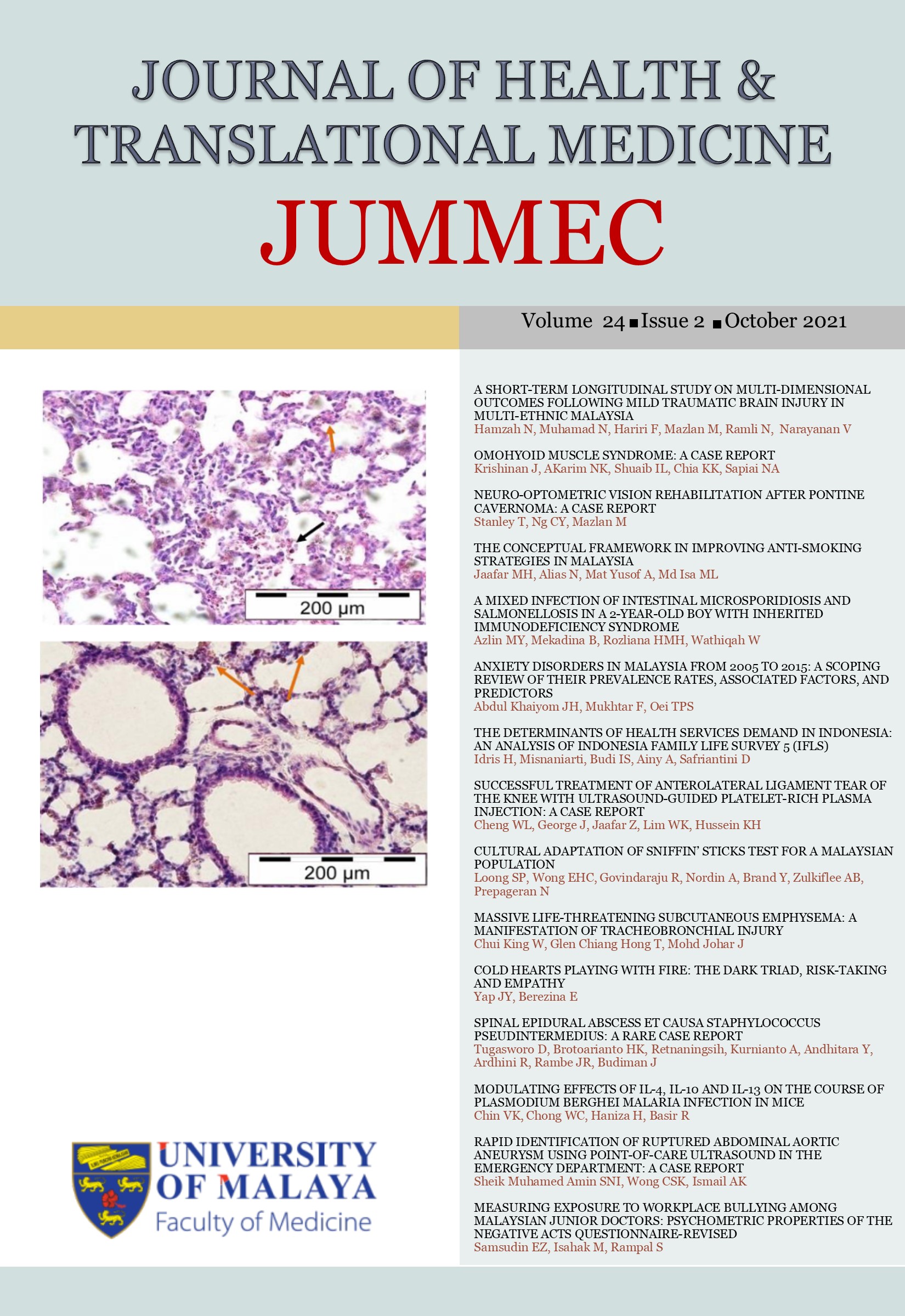ANXIETY DISORDERS IN MALAYSIA FROM 2005 TO 2015: A SCOPING REVIEW OF THEIR PREVALENCE RATES, ASSOCIATED FACTORS, AND PREDICTORS
Received 2020-04-05; Accepted 2021-03-08; Published 2021-09-16
DOI:
https://doi.org/10.22452/jummec.vol24no2.6Keywords:
Prevalence, Associated Factors, Predictors, Anxiety, MalaysiaAbstract
Introduction: The current study aims to investigate the prevalence rates, associated factors, and predictors of anxiety disorders in Malaysia through a scoping review.
Methods: PsycINFO and MEDLINE databases and a total of 28 local journals were used to search for published papers in this particular area. In this case, 37 out of 105 articles managed to meet the inclusion criteria and were subjected to review. A total of 17,673 respondents, which comprised university students, the general community, and numerous types of clinical patients, were included in the review.
Results: The results showed that the prevalence rate of anxiety disorders was in the range between 1% and 67.6% for the mentioned populations. Moreover, various types of associated factors were found to be related to anxiety such as being divorced, widowed, or single; having a lower than tertiary level of education; being unemployed or retired; and having a low socioeconomic status. Meanwhile, there were also several predictors of anxiety such as having to deal with negative life events; domestic violence; family history of mental illness; severe psychological problems; and chronic physical illness.
Conclusion: Generally, the prevalence of anxiety disorders is noticeable, and anxiety disorders may contribute to a decrease in the quality of life, an increase in social burden, reduced productivity, and increased utilization of health services. Therefore, awareness among community and health service providers regarding the prevalence rate of anxiety is believed to help in developing access to evidence-based psychological and pharmacological interventions.
Downloads
Downloads
Published
Issue
Section
License
All authors agree that the article, if editorially accepted for publication, shall be licensed under the Creative Commons Attribution License 4.0 to allow others to freely access, copy and use research provided the author is correctly attributed, unless otherwise stated. All articles are available online without charge or other barriers to access. However, anyone wishing to reproduce large quantities of an article (250+) should inform the publisher. Any opinion expressed in the articles are those of the authors and do not reflect that of the University of Malaya, 50603 Kuala Lumpur, Malaysia.


